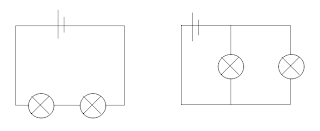First off, I would just like to say thank you to everyone who visited this blog over the past year- its been a great ride! A total of over 700 views in less than 5 months (from around the world!)... thank you for taking the time to visit this blog- I hope it helped you survive IB physics! And if you're taking IB/AP Chem at Interlake next year, I'll do the same thing (it helps me too!). This will be my last post on this page. I hope everyone has a great summer!
Okay, now we're done with the IB/AP tests! WOOOOOOOOOOOHOOOOOOOOO!!!!
At Interlake, that means that its time for our amazing end of the year project- TREBUCHETS!
So what exactly IS a trebuchet, you ask? Essentially, a trebuchet is a massive lever that uses a weight and a sling to shoot a projectile (like a large rock) over a great distance. Medieval siege engineers in charge of leading attacks on castles experimented with trebuchets as a possible alternative to catapults (which were too inaccurate), ballistae (think big crossbow), and siege towers/battering rams (which have to come all the way up to the walls of a castle to do any damage). Trebuchets performed beyond their designer's wildest dreams, and were only replaced when cannons (and other gunpowder-based weapons) became more popular siege weapons.
How does a trebuchet work?
A trebuchet is a lever. When the counterweight is allowed to fall, it creates rotational force, or torque. Because the arm is a single piece, the same rotational force is applied to the throwing arm, forcing it UP. In a fixed sling trebuchet, as the throwing arm gains angular velocity, the sling holding the projectile is forced up as well, and it swings, applying an outward force on the projectile in the sling. When the projectile reaches critical velocity, the centripetal force generated by the circular motion is no longer enough to keep the projectile moving in a circular path with the sling, and the projectile is released in a straight path.

Some trebuchets release their projectiles a little differently. In these trebuchets, one end of the sling is firmly attached to the throwing arm. The other end is loosely attached to the throwing arm by a pin. When the throwing arm reaches critical velocity, the end of the sling slips off the pin, launching the projectile.
Tips about trebuchet design:
1. You'll get the most range from your trebuchet if your release angle is as close to 45 degrees as possible.
2. Wide bases are more stable than narrow ones.
3. You have two main options for the counterweight design: a swinging counterweight or one that is attached to the counterweight arm and is not allowed to move. Keep in mind, however, that a non-moving counterweight will have massive recoil, because the entire arm will swing with the counterweight. The best way to compensate for this is to put wheels on the trebuchet, to neutralize some of the recoil. Swinging trebuchets do not need wheels, because the counterweight's free rotation makes it neutralize most recoil from the release of the projectile.
4. An aiming jig is a good idea. A jig allows you to easily realign the trebuchet after every shot.
5. Short lengths of PVC pipe are more sturdy than long lengths of PVC pipe.
6. Make sure your trigger mechanism is simple and reliable. A very simple trigger is a stick or piece of PVC that holds the counterweight up and can simply be yanked out to fire the trebuchet.
7. The optimum ratio between the length of the counterweight arm and the length of the throwing arm is approximately 1:3.
8. Bending the release pin forward on the sling will result in a later release.
9. Longer sling = later release, shorter sling = earlier release.
10. Use tips 8 & 9 to get the release angle you want.
11. Try to find a way to increase the mass of the trebuchet's base. This will make it more stable.
Once again, thank you! Its been a great ride- have a good summer!














